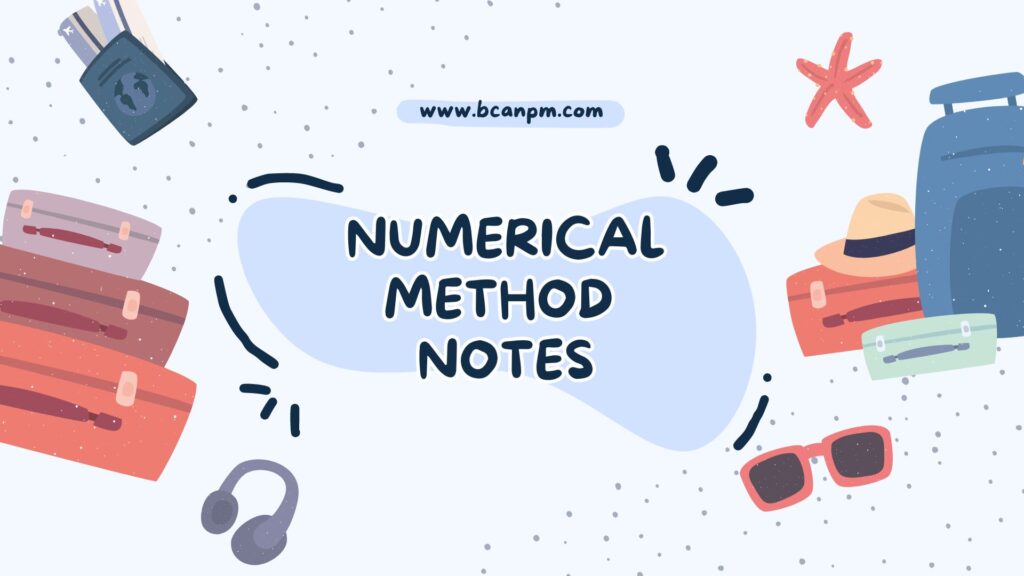
Free Download Numerical Method Notes in pdf – Bca 6th Semester. High quality, well-structured and Standard Notes that are easy to remember.
Welcome to Bcanpm.com
Bcanpm provides standard or well-structured Bca Notes for students. The notes are free to download. Each semester notes of Bca are available on www.bcanpm.com. In this post you can download Numerical Method Notes (DSE 4). All units are available to download for free.
Numerical Method Notes Unit 1 – 10
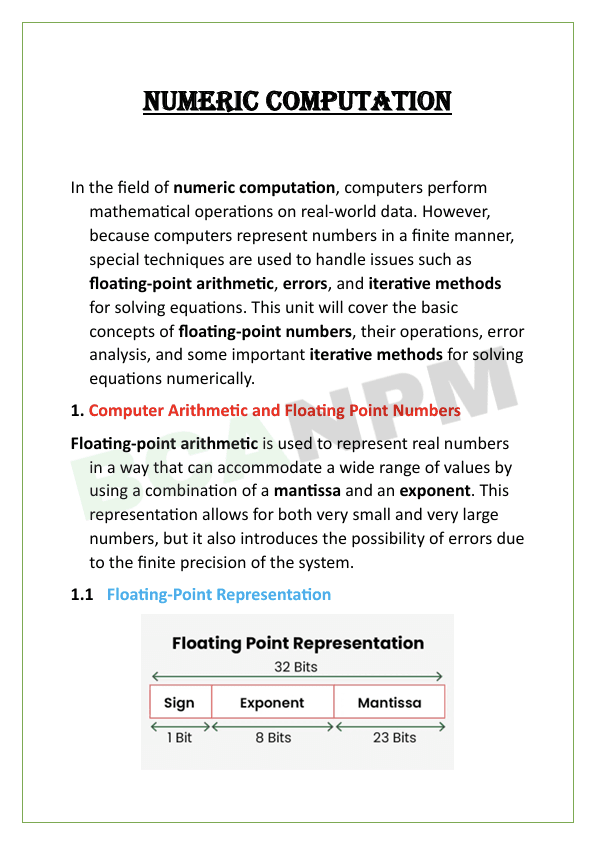
Unit 1: Numeric Computation
“Numeric computation” refers to the process of performing mathematical operations and calculations using numbers, often with the help of computers.
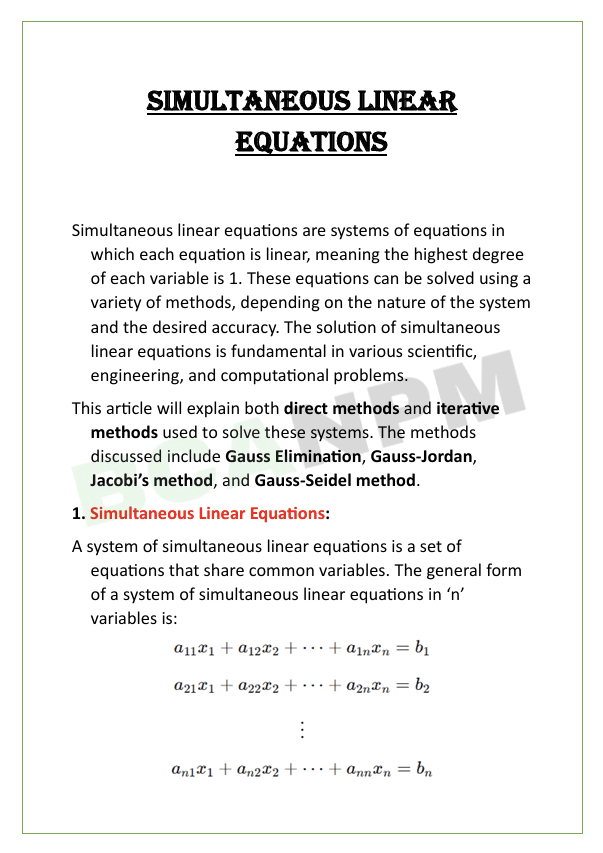
Unit 2: Simultaneous Linear Equations
“Simultaneous linear equations” are a set of two or more linear equations that share common variables and are solved together to find a solution that satisfies all equations in the system.
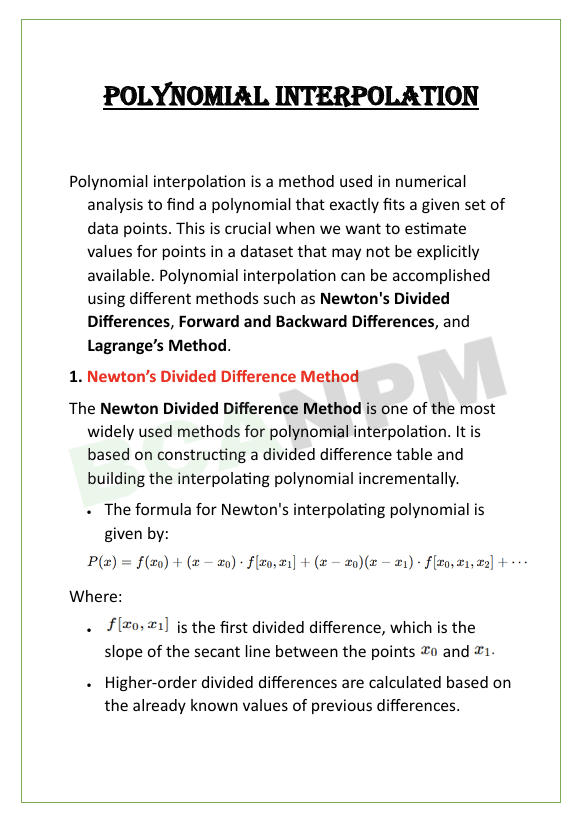
Unit 3: Polynomial Interpolation
“Polynomial interpolation” is a mathematical technique used to estimate a polynomial that passes through a given set of data points.

Unit 4: Numerical Differentiation and Integration
“Numerical differentiation and integration” are techniques used to approximate the derivative and integral of a function when an analytical solution is difficult or impossible to obtain.
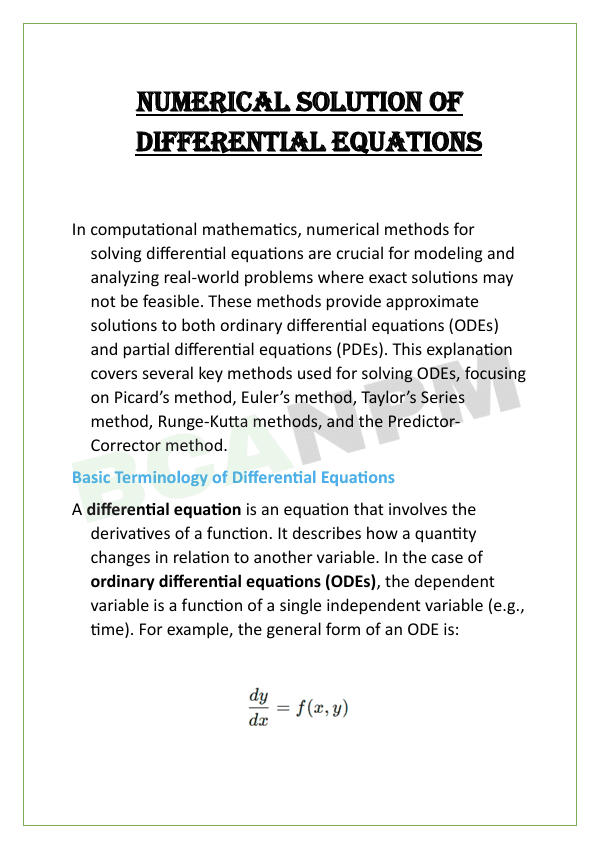
Unit 5: Numerical Solution of Differential Equations
The “numerical solution of differential equations” involves using computational methods to approximate the solutions of equations
Syllabus of Numerical Methods
Unit 1: Introduction to Numerical Methods
Introduction to Numerical Methods
- Definition and importance of numerical methods.
- Real-world applications of numerical methods in engineering, science, and finance.
- Error analysis: types of errors (absolute, relative), propagation of errors.
Basic Concepts
- Floating-point arithmetic and round-off errors.
- Stability and convergence of numerical algorithms.
- Precision and accuracy in numerical computations.
Unit 2: Solution of Nonlinear Equations
Bisection Method
- Concept and procedure.
- Convergence analysis.
- Advantages and limitations.
Newton-Raphson Method
- Derivation and procedure.
- Convergence criteria.
- Application to real-world problems.
Secant Method
- Concept and comparison with Newton-Raphson.
- Implementation and convergence.
- Advantages and disadvantages.
Fixed-Point Iteration
- Methodology and geometric interpretation.
- Convergence conditions.
- Practical applications.
Unit 3: Interpolation and Polynomial Approximation
Introduction to Interpolation
- Definition and need for interpolation.
- Interpolation vs. extrapolation.
Lagrange Interpolation
- Concept and formulation.
- Construction of Lagrange polynomials.
- Error in interpolation.
Newton’s Divided Difference Interpolation
- Divided difference table.
- Newton’s forward and backward interpolation formulas.
- Application to evenly and unevenly spaced data.
Spline Interpolation
- Cubic splines: definition and properties.
- Construction of spline curves.
- Comparison with polynomial interpolation.
Unit 4: Numerical Differentiation and Integration
Numerical Differentiation
- Finite difference approximations.
- Forward, backward, and central difference formulas.
- Error analysis in numerical differentiation.
Numerical Integration
- Trapezoidal rule: derivation and error analysis.
- Simpson’s 1/3 and 3/8 rules: derivation and error analysis.
- Application of numerical integration to area and volume calculations.
Romberg Integration
- Concept of Romberg integration.
- Implementation and error reduction.
- Comparison with other integration methods.
Unit 5: Solution of Systems of Linear Equations
Direct Methods
- Gaussian Elimination: procedure and pivoting strategies.
- LU Decomposition: method and applications.
- Matrix inversion using LU decomposition.
Iterative Methods
- Jacobi Method: concept and convergence criteria.
- Gauss-Seidel Method: implementation and comparison with Jacobi method.
- Successive Over-Relaxation (SOR): acceleration of convergence.
Error Analysis
- Condition number and its significance.
- Numerical stability of solutions.
- Practical applications of solving linear systems.
Unit 6: Eigenvalues and Eigenvectors
Power Method
- Concept and implementation.
- Convergence and practical considerations.
- Application to finding the largest eigenvalue and corresponding eigenvector.
Jacobi Method for Eigenvalues
- Procedure for symmetric matrices.
- Convergence analysis.
- Advantages and limitations.
QR Algorithm
- Concept and steps of the QR algorithm.
- Application to find all eigenvalues of a matrix.
- Error analysis and efficiency considerations.
Unit 7: Numerical Solutions of Ordinary Differential Equations (ODEs)
Initial Value Problems
- Euler’s method: derivation and error analysis.
- Improved Euler’s method and Heun’s method.
- Runge-Kutta methods: derivation and applications (2nd, 3rd, 4th order).
Boundary Value Problems
- Finite difference method for BVPs.
- Shooting method: concept and implementation.
- Application to physical and engineering problems.
Unit 8: Numerical Solutions of Partial Differential Equations (PDEs)
Classification of PDEs
- Parabolic, hyperbolic, and elliptic PDEs.
- Examples and physical significance.
Finite Difference Methods for PDEs
- Explicit and implicit methods for solving PDEs.
- Crank-Nicolson method for parabolic PDEs.
- Stability and convergence analysis.
Numerical Methods for Elliptic PDEs
- Solution of Laplace and Poisson equations.
- Iterative methods: Jacobi, Gauss-Seidel, SOR.
- Application to heat conduction, fluid flow, and electrostatics problems.
Unit 9: Curve Fitting and Approximation
Least Squares Method
- Fitting linear and nonlinear curves.
- Error minimization in curve fitting.
- Application to data analysis and regression.
Polynomial Regression
- Fitting polynomial curves to data.
- Determination of polynomial coefficients.
- Comparison with linear regression.
Approximation Theory
- Chebyshev polynomials.
- Minimax approximation.
- Application to function approximation.
Unit 10: Numerical Optimization
Unconstrained Optimization
- Gradient descent method: concept and implementation.
- Newton’s method for optimization.
- Convergence analysis and practical applications.
Constrained Optimization
- Lagrange multipliers and the Karush-Kuhn-Tucker (KKT) conditions.
- Simplex method for linear programming.
- Application to resource allocation and optimization problems in engineering and economics.